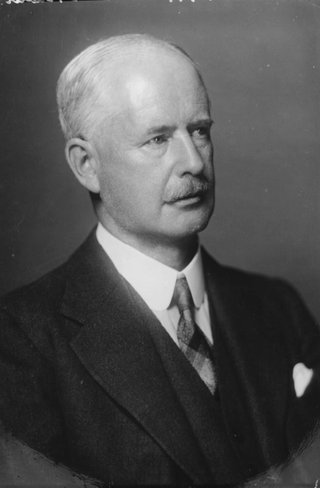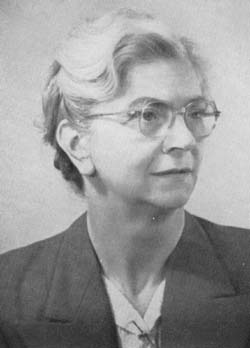
Mycology is the branch of biology concerned with the study of fungi, including their taxonomy, genetics, biochemical properties, and use by humans. Fungi can be a source of tinder, food, traditional medicine, as well as entheogens, poison, and infection. Mycology branches into the field of phytopathology, the study of plant diseases. The two disciplines are closely related, because the vast majority of plant pathogens are fungi. A biologist specializing in mycology is called a mycologist.

Miles Joseph Berkeley was an English cryptogamist and clergyman, and one of the founders of the science of plant pathology. The standard author abbreviation Berk. is used to indicate this person as the author when citing a botanical name.

Sir Edwin John Butler was an Irish mycologist and plant pathologist. He became the Imperial Mycologist in India and later the first director of the Imperial Bureau of Mycology in England. He was knighted in 1939. During his twenty years in India, he began large scale surveys on fungi and plant pathology and published the landmark book Fungi and Disease in Plants: An Introduction to the Diseases of Field and Plantation Crops, especially those of India and the East (1918) and has been called the Father of Mycology and Plant Pathology in India.

The British Mycological Society is a learned society established in 1896 to promote the study of fungi.

Arthur Disbrowe Cotton, was an English plant pathologist, mycologist, phycologist, and botanist. The standard author abbreviation Cotton is used to indicate this person as the author when citing a botanical name.

Elsie Maud Wakefield, OBE was an English mycologist and plant pathologist.
Margaret Elizabeth Barr Bigelow (1923–2008) was a Canadian mycologist known for her contributions to the Ascomycetes fungi.
William Henry Weston Jr. (1890–1978) was an American botanist, mycologist, and first president of the Mycological Society of America. Weston was known for his research in the fungal group known as the phycomycetes, particularly the pathogenic genus Sclerospora.
Frederick Kroeber Sparrow was an American mycologist. He was known for his research on aquatic fungi, and in particular the genus Physoderma, and he produced a well-received monograph in 1943 titled The Aquatic Phycomycetes Exclusive of the Saprolegniacea and Pythium; this was republished in 1960 as Aquatic Phycomycetes.
Mathilde Simone Rachel Pauline Bensaude was an internationally renowned mycologist and plant pathologist whose pioneering doctoral thesis at the Sorbonne first showed heterothallism in the basidiomycetes. Bensaúde is also a major pioneer in the field of Plant Pathology in Portugal, and founded Portugal's Plant Quarantine Services and is one of the founders of the Portugal Society of Biology.
Agathe Louise van Beverwijk was a Dutch mycologist and botanist. She spent most of her career at the Centraalbureau voor Schimmelcultures, where she was director from 1958 until her death in 1963.
Effie Almira Southworth Spalding (1860–1947), was an American botanist and mycologist, and the first woman plant pathologist hired by the United States Department of Agriculture (USDA). Her most important discovery was the 1887 identification of the fungus Colletotrichum gossypii as the cause of cotton cankers, a disease which killed thousands of acres of cotton and was a major economic threat. She taught botany at several institutions, worked at the Desert Botanical Laboratory with her husband, and established the Botany Department Herbarium at the University of Southern California.
Angie Maria Beckwith was an American phytopathologist, at the primary pathology laboratory at the USDA's Bureau of Plant Industry under Erwin F. Smith and Florence Hedges during the 1920s.
Jean Beagle Ristaino is an American scientist and William Neal Reynolds Distinguished Professor of Plant Pathology. She is best known for her work on the epidemiology and population genetics of Oomycete plant pathogens in the genus Phytophthora and her work on the population genomics of historic outbreaks of the Irish famine pathogen, Phytophthora infestans

Lilian Edith Hawker was a British mycologist, known for her work on fungal physiology, particularly spore production. She was an expert on British truffles, and also published in the fields of plant physiology and plant pathology. She was also known for her contributions to education in mycology. Most of her career was spent at the botany department of the Imperial College of Science and Technology (1932–45) and the University of Bristol (1945–73), where she held the chair in mycology (1965–73) and was dean of the science faculty (1970–73). She served as president of the British Mycological Society, and was elected an honorary member of that society and of the Mycological Society of America. She published an introduction to fungi and two books on fungal physiology, of which Physiology of Fungi (1950) was among the first to survey the field, and also co-edited two microbiology textbooks.
Kathleen Sampson was an English mycologist and plant pathologist, with a focus in herbage crops and cereal diseases. She was a leading authority on smut fungi growing in the British Isles.
Eva Sansome, nee Richardson (1906-2001) was a British mycologist.
Clarence James Hickman was a British-Canadian mycologist. He is noteworthy for his discovery in 1940 that the oomycete species Phytophthora fragariae is the cause of the disease red stele in strawberry plants.
Elizabeth "Elsie" Marianne Blackwell was an English botanist and mycologist, known as an expert on Phytophthora. She was the president of the British Mycological Society for a one-year term from 1942 to 1943.
John Colhoun was a British mycologist, phytopathologist, and professor of cryptogamic botany. For a one-year term from 1963 to 1964 he was the president of the British Mycological Society.







